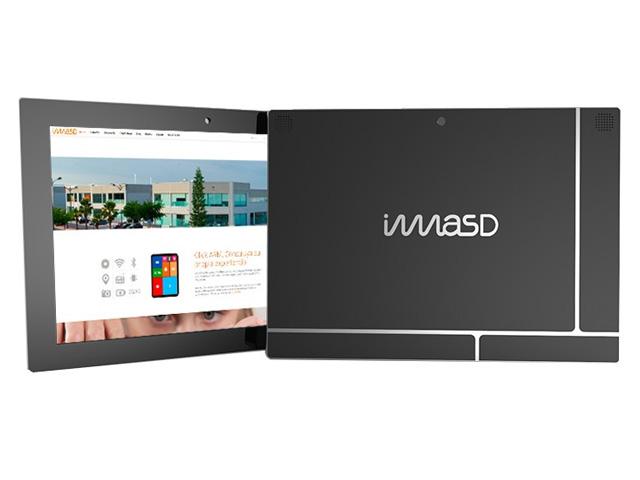
This less-than-encouraging history has not dissuaded other companies from taking up the modular mantle. Enter ImasD Technologies, a Spain-based firm that plans to launch a tablet with interchangeable components later this year.
Another set of cores intended to launch before the end of this year will offer up a broader selection.
The tablet, dubbed the “Click-ARM” (with the acronym standing for “Advanced Removable Modules”), operates on the same principle as does Project Ara; it’s an inexpensive base with slots for hardware modules. Of course, no working model is shown on the website, and only a handful of (derivative) renderings are posted of what the tablet could look like, so it’s unclear whether the Click-ARM will really be ready for prime time in 2015.
Although the site is short on pictures of the device, it does offer a great deal of information about the different configurations available. The $313 configuration ships with a 10.1-inch 1,280 x 800 pixel screen, which is swappable. Also swappable is the CK-HUB 101 motherboard, which sports HDMI output, two USB ports, four mini PCI Express slots, Bluetooth 4.0, and dual-band Wi-Fi connectivity. Populating the processor slot is a CK-Core module with a Samsung Exynos 4412 processor and 2GB of RAM. A 16GB CK module provides storage.
Additional add-ons are already in the works. Two core modules will launch simultaneously with the Click-ARM. One is paired with the same Exynos 4412 processor found in the base model, but with less RAM, and the other packs an Intel “Bay Trail” processor and 2GB of
Another set of cores intended to launch before the end of this year will offer up an even broader selection. You’ll be able to get a range of options, including an Exynos 3250 chip with either 512MB or 1GB of RAM on the lower end, or a capable Exynos 5260 chip with between 2-4GB of
Beyond processors, the offerings include expanded storage (up to 128GB) and radio modules, and the company is also making use of the Mini PCI Express slots. Separate components with Ethernet, 3G, GPS, inductive charging pads, and oscilloscopes are in development for release in Q4 2015.
The central tenet of Click-ARM is ease of customization, as ImasD explains in its FAQ, “You can make your own devices and commercialize them. We only provide the PCB Click ARM modules and core.” Furthermore, the tablet supports any Linux-based operating system. That includes Android, of course, but also an endless number of distributions pre-compiled for ARM — including Ubuntu and Linux Mint, to name just two.
The Click-ARM seems promising, although we at Digital Trends weren’t very encouraged by the rendering, which features a simulated image from Samsung’s Galaxy Tab 8.9 promotional materials. After reaching out to ImasD for more information, Project Director Pedro Peláez Catalá contacted us by e-mail to share a development tidbit. The team of six hardware engineers and four software engineers that has been working on the platform, he wrote, is relatively small but committed to the timeline laid out in the initial press release. Unfortunately, that timeline remains vague, and Peláez declined to offer more concrete details.
Still, if you’d like to take your chances, the Click-ARM is available for pre-order now. ImasD says only 1,000 will be manufactured and sold initially.

